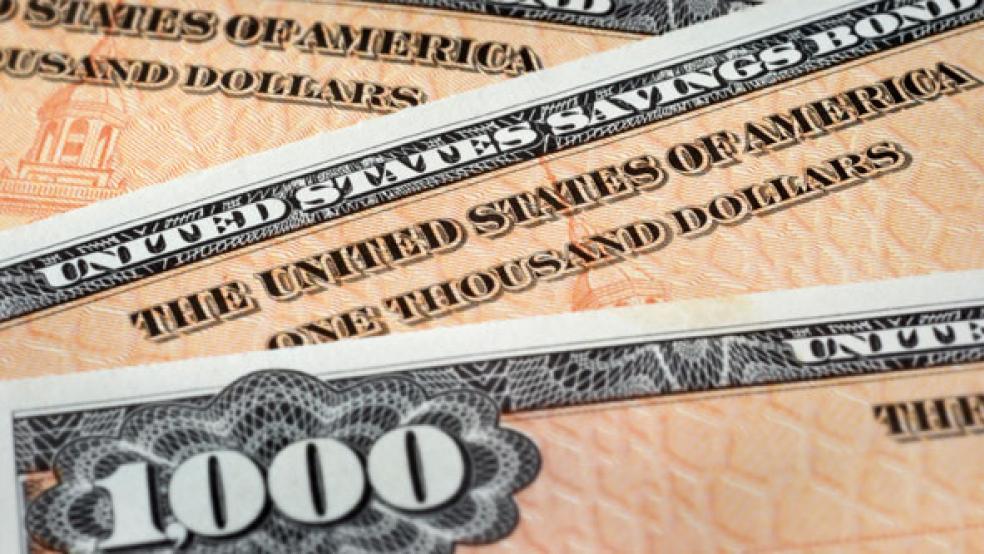Standard & Poor’s continued to roil the markets Monday by downgrading the credit ratings of Fannie Mae and Freddie Mac and other agencies linked to long-term U.S. debt. This comes on the heels of S&P’s action last Friday night reducing the U.S. government’s AAA credit rating by a notch.
Ironically, as investors dumped stocks and other more risky assets, they bought gold and more of the downgraded Treasury securities, driving some yields to historic lows.
This so-called flight to safety is an indication that investors generally still regard Treasuries as one of the most secure asset in the world. The two other major rating agencies, Moody’s Investor Services and Fitch Ratings, did not lower their AAA stamp to AA+, although there is speculation that Moody's will follow.
Stock price indexes fell 2 percent or more in most Asian and European markets today, and U.S. markets followed suit. The Standard & Poor’s 500 index was down almost four percent at 12:40 pm.
Peter Fisher, who manages Black Rock’s huge fixed-income portfolio, told Bloomberg Television that the downgrade was just one among several factors, such as the prospect of weaker economic growth in Europe and the United States that is causing investors to shed their more risky assets.
The downgrade, Fisher said, “is a wakeup call to investors about the level of risk in the world. It doesn’t change anything about the level of risk in U.S. Treasuries. The facts about the U.S. fiscal outlook have been known to us for some time.”
Shaky markets and prospects for weaker economic growth will be on the minds of Federal Reserve officials who meet on Tuesday in a policy-making session. It’s not clear whether the Federal Open Market Committee will take any new steps to try to shore up markets and the economy. Terry Sheehan of Stone & McCarthy Research Associates expects the FOMC to take note of the turmoil but not act immediately by resuming purchases of longer-term Treasury securities, for example.
“However, if the FOMC does determine that some action is necessary in the near-term, its best option may be to extend the average maturity of the current portfolio rather than increasing the size of the Fed's holdings,” Sheehan said. That step would mean selling some shorter-term Treasuries, which would add liquidity to that part of the market.
The Standard & Poor’s announcement had a lot to say about the state of American politics but little about the country’s ability to pay its debts. More or less ignoring the downgrade, investors bought so many two-year Treasury notes that their yield was driven to just under a quarter-percentage point, the lowest level ever. Yields on 10-year Treasuries stood at 2.44 percent this morning, just slightly more than yields on comparable securities issued by Germany whose fiscal standing is among the best in the world.
rest of Euroland will fail, too
Other European countries’ debt situations are much more in question, particularly Italy and Spain. “If Italy and Spain fail, the rest of Euroland will fail, too,” Carl Weinberg of High Frequency Economics told his clients this morning. “That is to say that even Germany’s public sector finances will take a large, probably unsustainable, hit if Berlin has to finance support for Madrid and Rome. France surely will go down if Italy does.” That sort of risk is another reason Treasuries are still the investment of choice for risk-shy investors.
Importantly, Standard & Poor’s did not reduce the A1+ rating, the highest possible, on short-term debt. Also, federal banking regulators, including the Federal Reserve, said the long-term downgrade would not affect the amount of capital banks have to have on hand.
In its statement, Standard & Poor’s said the recent spending cut deal between President Obama and congressional Republicans that led to an increase in the debt limit “falls short” of what is needed to stabilize the government’s fiscal outlook. “The political brinksmanship of recent months highlights what we see as America’s governance and policymaking becoming less stable, less effective, and less predictable than what we previously believed.”
The statement didn’t single out either political party by name for criticism, but it noted pointedly that the “debt ceiling and the threat of default have become political bargaining chips in the debate over fiscal policy”—-and it was the Republicans that did that.
In contrast to the divisive political debate, the government’s ability to service its newly increased $14.5 trillion debt is actually greater than it frequently has been in the past. The average interest rate on the debt was just 2.4 percent in July and the government’s total interest bill is expected to be just over $200 billion—or about 1.3 percent of the gross domestic economy.
With the debt ceiling raised, this week Treasury plans to sell $72 billion worth of three- and 10-year notes and 30-year bonds, yield are likely to be so low that taxpayers should be pleased.
Standard & Poor’s is right, however, that the spending cuts called for in the debt ceiling deal – totaling as much as $1.5 trillion if a super congressional joint committee can reach agreement later this year on major entitlement reforms -- are not, by themselves, nearly enough to secure the government’s fiscal future. The weaker economic outlook which triggered the big selloff in stocks only makes matters worse. Government revenue will suffer, making matters worse.
And if the impact of the loss of the AAA rating isn’t visible, the politicians who have been claiming all along that a failure to raise the debt limit wouldn’t have been a big deal may be encouraged to continue to reject any budget compromises. At some point, investors really could balk at buying Treasuries with such low yields. That in turn would only make the outlook rougher still.




